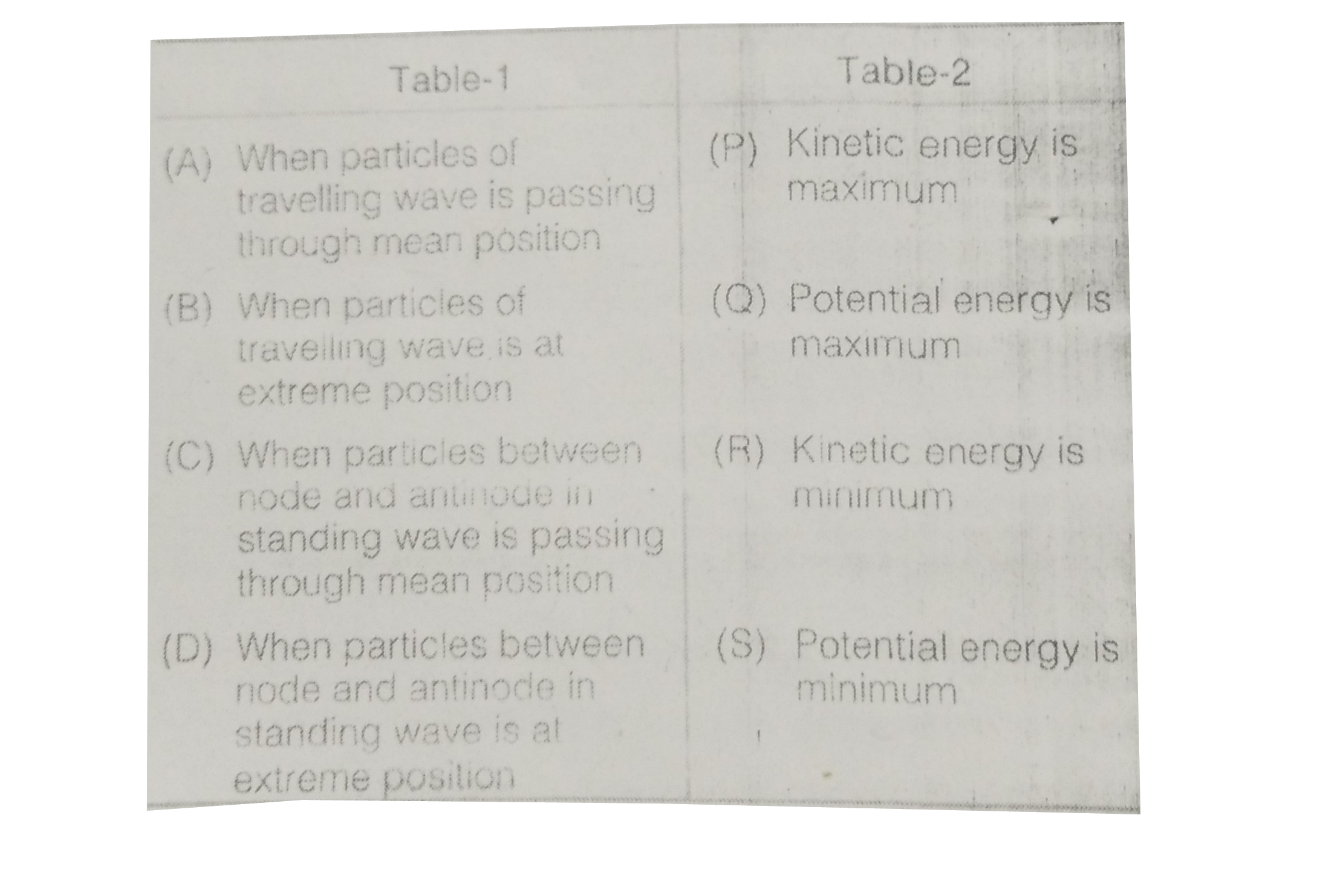A particle starts oscillating simple harmonically from its equilibrium position then, the ratio of kinetic energy and potential energy of the particle at the time T/12 is: (T=time period)
To find the ratio of kinetic energy (KE) to potential energy (PE) of a particle oscillating in simple harmonic motion (SHM) at time T/12, we can follow these steps:
Step 1: Determine the position of the particle at time T/12
The displacement x of a particle in SHM can be expressed as:
x=Asin(ωt)
where A is the amplitude and ω is the angular frequency. The angular frequency ω is related to the time period T by:
ω=2πT
Substituting t=T12:
x=Asin(2πT⋅T12)=Asin(π6)
Since sin(π6)=12:
x=A⋅12=A2
Step 2: Calculate the kinetic energy (KE)
The kinetic energy of a particle in SHM is given by:
KE=12k(A2−x2)
Substituting x=A2:
KE=12k(A2−(A2)2)=12k(A2−A24)
This simplifies to:
KE=12k(3A24)=38kA2
Step 3: Calculate the potential energy (PE)
The potential energy of a particle in SHM is given by:
PE=12kx2
Substituting x=A2:
PE=12k(A2)2=12k(A24)=18kA2
Step 4: Find the ratio of KE to PE
Now we can find the ratio of kinetic energy to potential energy:
Ratio=KEPE=38kA218kA2
The kA2 terms cancel out:
Ratio=31=3
Final Answer
The ratio of kinetic energy to potential energy at time T/12 is 3.
---
x=Asin(ωt)
where A is the amplitude and ω is the angular frequency. The angular frequency ω is related to the time period T by:
ω=2πT
Substituting t=T12:
x=Asin(2πT⋅T12)=Asin(π6)
Since sin(π6)=12:
x=A⋅12=A2
KE=12k(A2−x2)
Substituting x=A2:
KE=12k(A2−(A2)2)=12k(A2−A24)
This simplifies to:
KE=12k(3A24)=38kA2
PE=12kx2
Substituting x=A2:
PE=12k(A2)2=12k(A24)=18kA2
Ratio=KEPE=38kA218kA2
The kA2 terms cancel out:
Ratio=31=3
The ratio of kinetic energy to potential energy at time T/12 is 3.
Similar Questions
A particle starts oscillating simple harmoniclaly from its equilibrium postion. Then the ratio fo kinetic and potential energy of the principle at time T12 is (Umean=0, T= Time period)
View SolutionIn simple harmonic motion of a particle, maximum kinetic energy is 40 J and maximum potential energy is 60 J. then
View Solution
Knowledge Check
A particle executing simple harmonic motion with time period T. the time period with which its kinetic energy oscillates is
ATB2TC4TDT2
A 20g particle is oscillating simple harmonically with a period of 2sec and maximum kinetic energy 2J. The total mechanical energy of the particle is zero , find
a Amplitude of oscillation
b. potential energy as a function of displacement x relative to mean position.
View SolutionRatio of kinetic energy at mean position to potential energy at A/2 of a particle performing SHM
View SolutionIf particle is excuting simple harmonic motion with time period T, then the time period of its total mechanical energy is :-
View SolutionA particle undergoing simle harmonic motion has time dependent displacement given by x(t)=Asin(πt)90.The ratio of kinetic to potential energy of this partle at t= 210s will be :
View SolutionA loaded vertical spring executes simple harmonic oscillations with period of 4 s. The difference between the kinetic energy and potential energy of this system oscillates with a period of
View SolutionIn case of mechanical wave a particle oscillates and during oscillation its kinetic energy and potential energy changes.

View SolutionA particle is projected at an angle θ from the horizontal with kinetic energy (T). What is the kinetic energy of the particle at the highest point ?
View Solution
